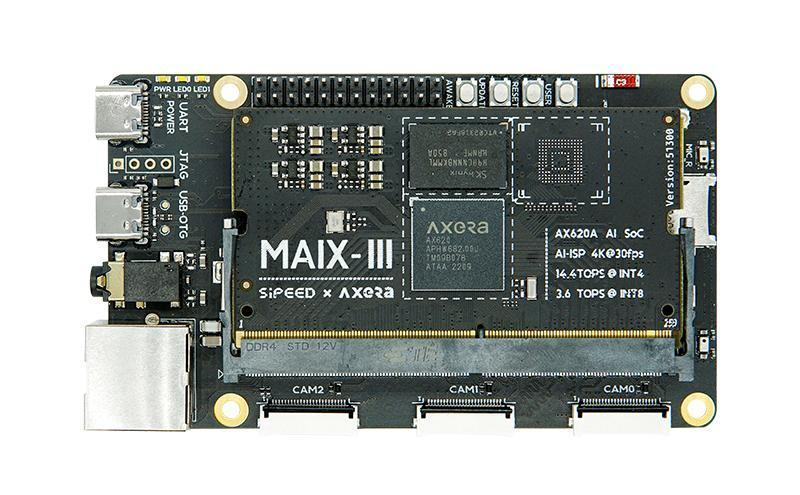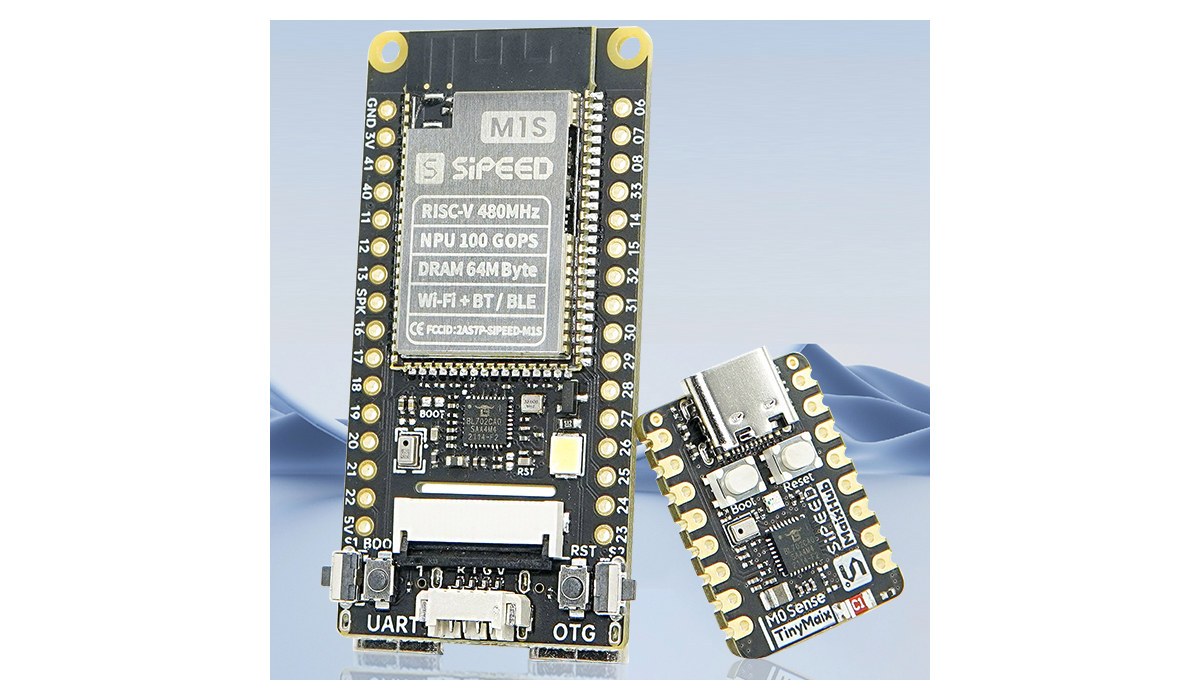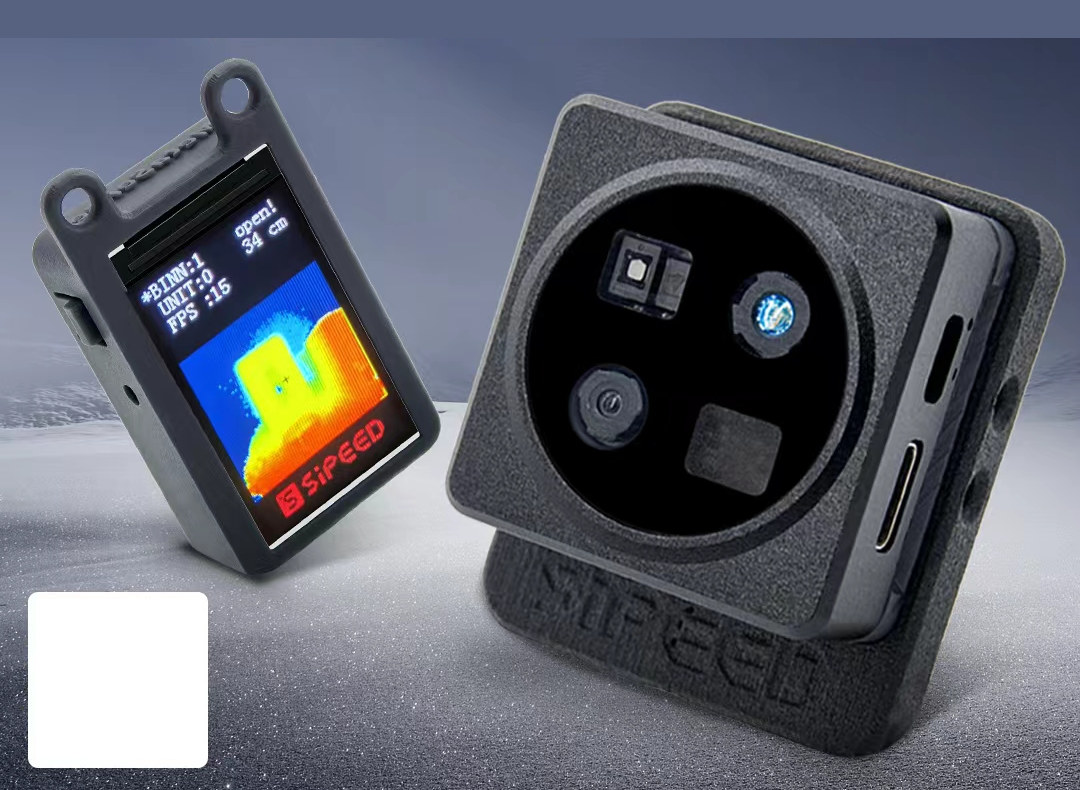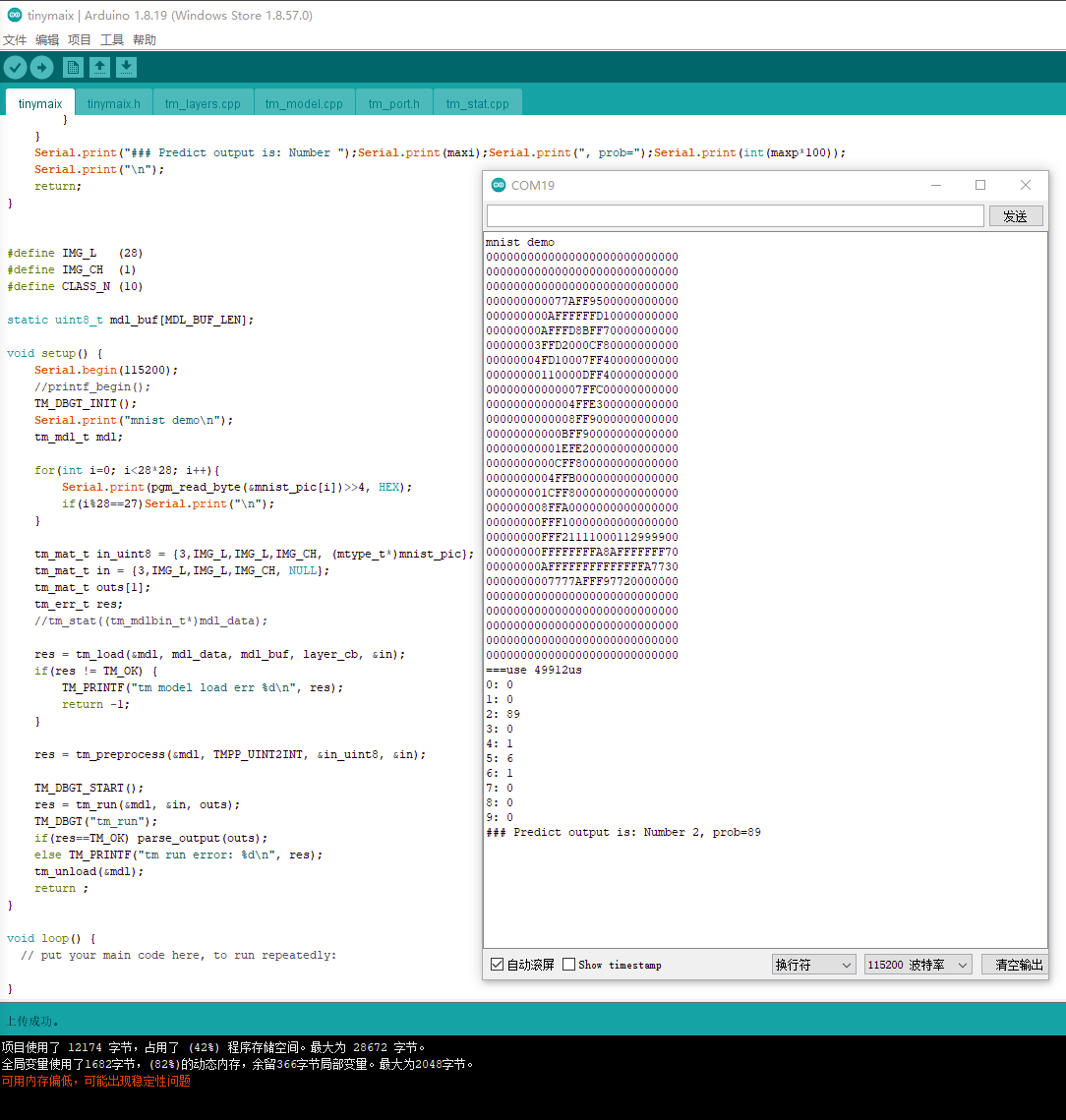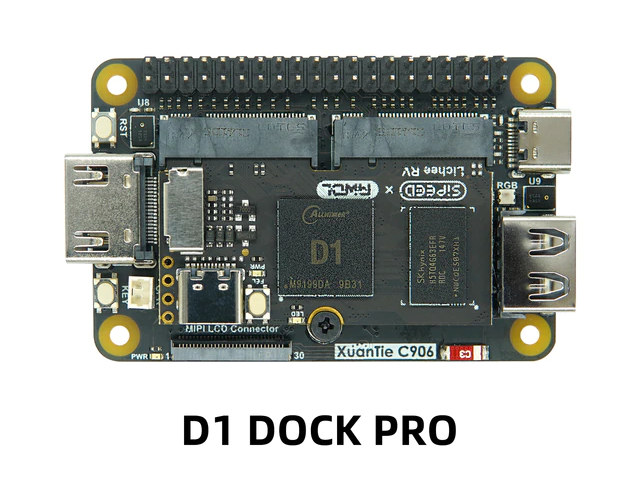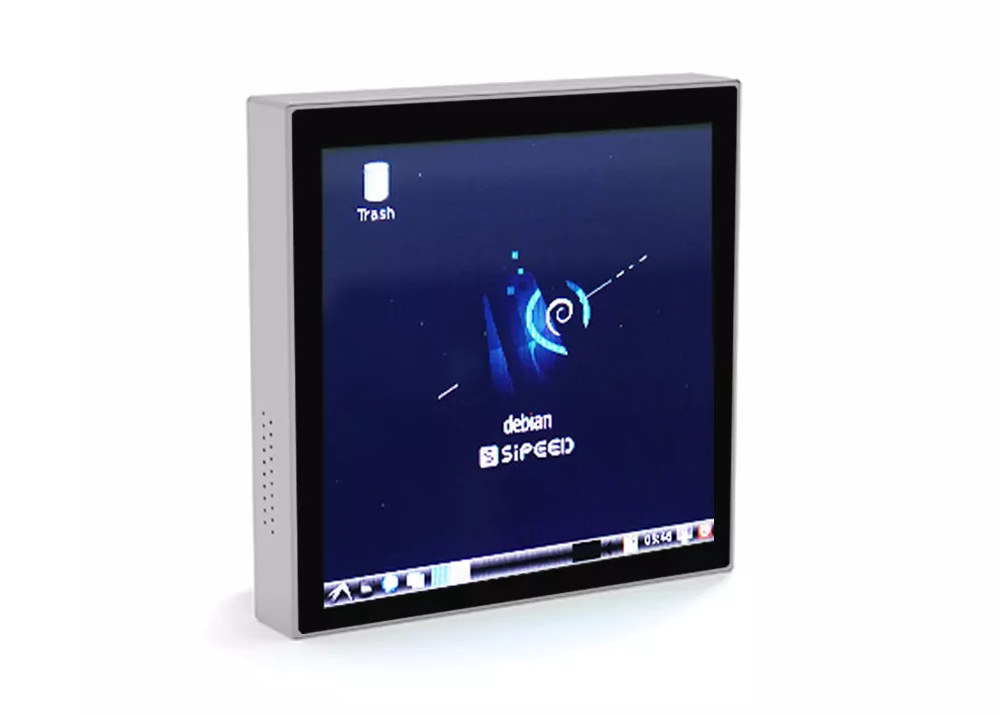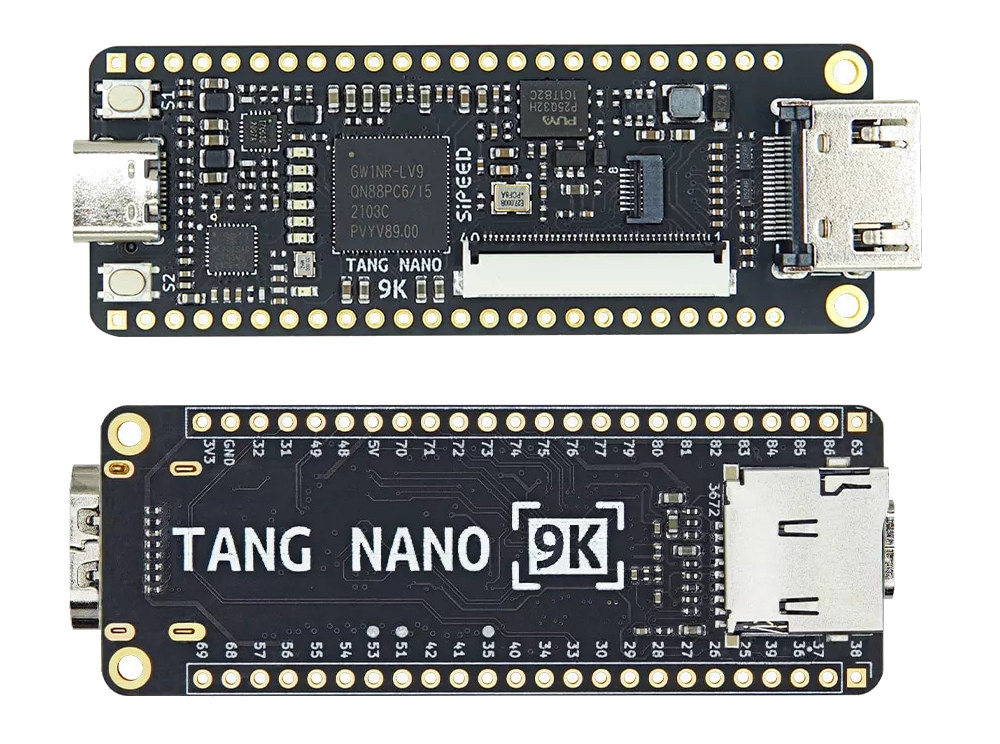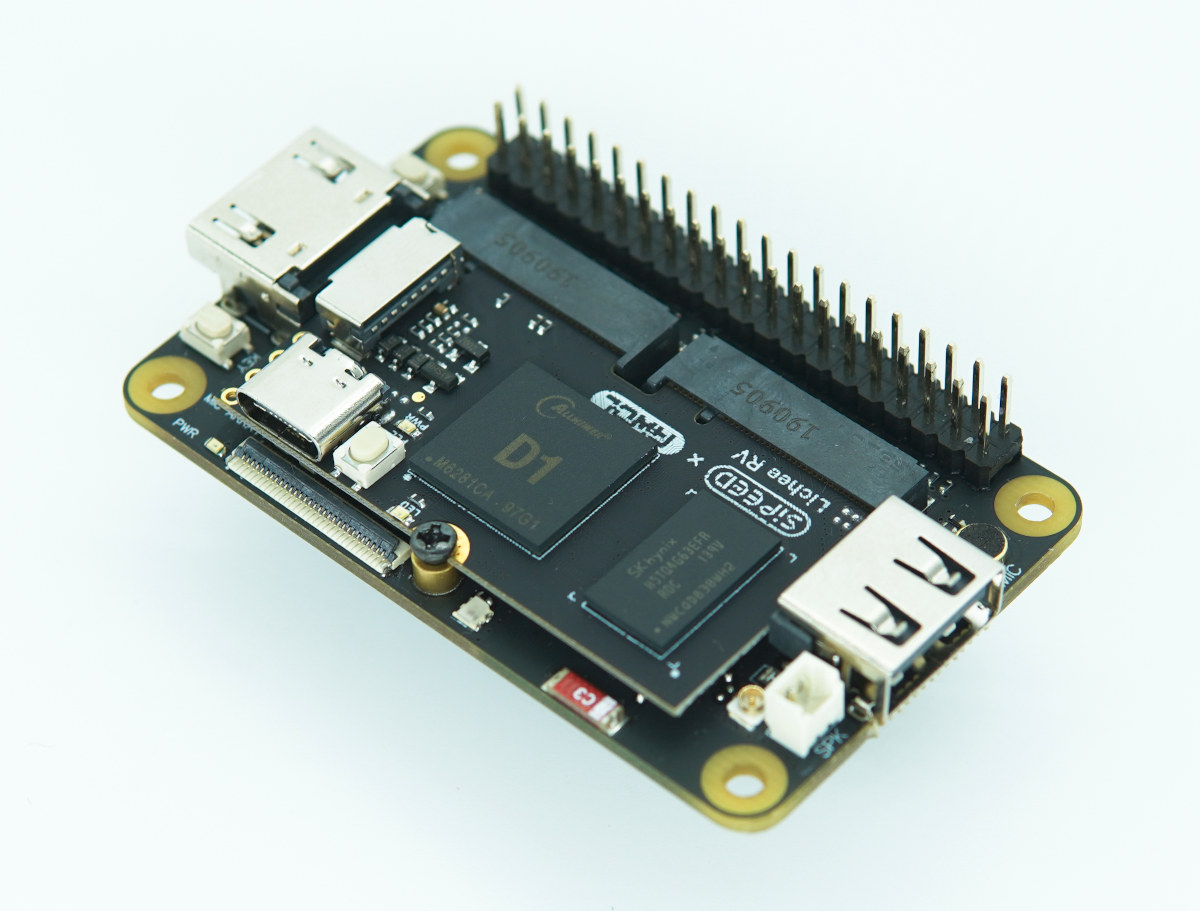Sipeed Maix-III development kit is composed of a core board equipped with AXERA AX620A AI processor and a carrier board exposing several interfaces such as Ethernet, USB, and camera connectors. resources. As noted in our earlier article about the AXERA AX620A chip, it is a quad-core Arm Cortex-A7 chip with an NPU offering a maximum of 14.4 TOPS @ INT4 or 3.6TOPSs @ INT8, and as such, this development board mainly targets AI vision applications. The board is an upgrade to the earlier Speed Maix II with an Allwinner V831 processor. Thanks to the low power consumption of the AXERA AX620A SoC, the Sipeed Maix-III board can be powered directly through its USB port as the system consumers 5W (5V@1A) with the carrier board, the system-on-module, WiFi, Ethernet, a camera, and a 5-inch display. Using the display does not require am additional heatsink or fan, nor does it require an […]
Sipeed M1s & M0sense – Low-cost BL808 & BL702 based AI modules (Crowdfunding)
Sipeed has launched the M1s and M0Sense AI modules. Designed for AIoT application, the Sipeed M1s is based on the Bouffalo Lab BL808 32-bit/64-bit RISC-V wireless SoC with WiFi, Bluetooth, and an 802.15.4 radio for Zigbee support, as well as the BLAI-100 (Bouffalo Lab AI engine) NPU for video/audio detection and/or recognition. The Sipeed M0Sense targets TinyML applications with the Bouffa Lab BL702 32-bit microcontroller also offering WiFi, BLE, and Zigbee connectivity. Sipeed M1s AIoT module The Sipeed M1S is an update to the Kendryte K210-powered Sipeed M1 introduced several years ago. Sipeed M1s module specifications: SoC – Bouffalo Lab BL808 with CPU Alibaba T-head C906 64-bit RISC-V (RV64GCV+) core @ 480MHz Alibaba T-head E907 32-bit RISC-V (RV32GCP+) core @ 320MHz 32-bit RISC-V (RV32EMC) core @ 160 MHz Memory – 768KB SRAM and 64MB embedded PSRAM AI accelerator – NPU BLAI-100 (Bouffalo Lab AI engine) for video/audio detection/recognition delivering up […]
Sipeed MetaSense RGB ToF 3D depth cameras are made for MCUs & ROS Robots (Crowfunding)
We’ve just written about the Arducam ToF camera to add depth sensing to Raspberry Pi, but there are now more choices, as Sipeed has just introduced its MetaSense ToF (Time-of-Flight) camera family for microcontrollers and robots running ROS with two models offering different sets of features and capabilities. The MetaSense A075V USB camera offers 320×240 depth resolution plus an extra RGB sensor, an IMU unit, and a CPU with built-in NPU that makes it ideal for ROS 1/2 robots, while the lower-end MetaSense A010 ToF camera offers up to 100×100 resolution, integrates a 1.14-inch LCD display to visualize depth data in real-time and can be connected to a microcontroller host, or even a Raspberry Pi, through UART or USB. MetaSense A075V specifications: SoC – Unnamed quad-core Arm Cortex-A7 processor @ 1.5 GHz with 0.4 TOPS NPU System Memory – 128 MB RAM Storage – 128MB flash Cameras 800×600 @ 30 […]
TinyMaix is a lightweight machine learning library for microcontrollers
Sipeed TinyMaix open-source machine learning library is designed for microcontrollers, and lightweight enough to run on a Microchip ATmega328 MCU found in the Arduino UNO board and its many clones. Developed during a weekend hackathon, the core code of TinyMax is about 400 lines long, with a binary size of about 3KB, and low RAM usage, enabling it to run the MNIST handwritten digit classification on an ATmega320 MCU with just 2KB SRAM and 32KB flash. TinyMax highlights Small footprint Core code is less than 400 lines (tm_layers.c+tm_model.c+arch_O0.h), code .text section less than 3KB Low RAM consumption, with the MNIST classification running on less than 1KB RAM Support INT8/FP32 model, convert from keras h5 or tflite. Support multi-architecture acceleration: ARM SIMD/NEON, MVEI, RV32P, RV64V (32-bit & 64-bit RISC-V vector extensions) User-friendly interfaces, just load/run models Supports full static memory config MaixHub Online Model Training support coming soon Sipeed says there […]
Sipeed Lichee RV Dock Pro RISC-V SBC adds MIPI/RGB LCD connector, dual MIC, and BL702 JTAG+UART debugger
Sipeed has launched the Lichee RV Dock Pro kit for the company’s Lichee RV Allwinner D1 RISC-V module that builds on the earlier Lichee RV Dock carrier board and adds a MIPI/RGB LCD connector, two built-in microphones, as well as an on-board JTAG+UART debugger based on Bouffalo Lab BL702 microcontroller. Lichee RV Dock Pro specifications (preliminary) which changes in bold or strikethrough: Supported system-on-module (SoM) – Lichee RV module with Allwinner D1 RISC-V processor @ 1 GHz, 512MB DDR3, MicroSD card slot, and USB Type-C OTG port Storage – Optional SPI flash Display interfaces HDMI port up to 4Kp30 MIPI LCD/RGB interface for up to 720p30 display Audio – 3W power amplifier, 2x analog microphone, support for 6-mic array via expansion Connectivity – WiFi 4 and Bluetooth 4.2 via Realtek RTL8723 wireless module with ceramic antenna, IPEX antenna connector USB – 1x USB Type-A port adding to the USB-C OTG […]
Lichee RV-86 RISC-V Linux 4-inch panel targets home automation, HMI applications
When Sipeed first introduced the Lichee RV module with Allwinner D1 RISC-V SoC last November, they also teased the Lichee RV-86, an “86 Box” with a 4-inch 480×480 touchscreen display, an XR829 WiFi and Bluetooth module, Ethernet (via USB), two microphones, a GPIO header, and support for WAFT (WebAssembly Framework for Things). I’ve just noticed the Lichee RV-86 has been for sale for several months, so it may be interesting to have a closer look, and now there’s also an option to get a 720×720 touchscreen display. Lichee RV-86 specifications: SoM – Sipeed Lichee RV Nezha compute module with Allwinner D1 RISC-V processor @ 1 GHz, 512MB or 1GB DDR3, microSD card slot, and USB Type-C OTG port Display 4-inch 480×480 IPS capacitive touch screen OR 4-inch 720×720 IPS capacitive touch screen It is also possible to connect an 8-inch 1280*800 IPS capacitive touch screen to the board Audio – […]
Tang Nano 9K FPGA board can emulate PicoRV32 RISC-V soft-core with all peripherals
Tang Nano 9K FPGA is the third board from Sipeed based on GOWIN FPGA following the original Tang Nano board with 1K LUT and Tang Nano 4K launched last year with GW1NSR-LV4C (aka GW1NSR-4C) FPGA offering 4068 logical units and 64 Mbit PSRAM, plus an Arm Cortex-M3 hard processor. As its name implies, the new board comes with 9K LUTs, as well as 64 Mbit PSRAM, 32 Mbit Flash, a micro SD card, and video I/O (HDMI, RGB LCD connector) that makes it suitable to run Verilog HDL code emulating a PicoRV32 RISC-V soft-core with all peripherals. Tang Nano 9K FPGA board specifications: FPGA – GOWIN LittleBee GW1NR-9/GW1NR-LV9 8,640 logical units (LUTs) 6,480 flip-flop 17,280 bits shadow SRAM (SSRAM) 486 Kbit block SRAM (BSRAM) 64 Mbit PSRAM 608 Kbit user flash 2x PLL Up to 276x user I/O Storage – 32 Mbit SPI flash. MicroSD card socket Display I/F HDMI […]
Sipeed Lichee RV RISC-V module gets $5+ carrier board with HDMI and USB ports, optional WiFi
Sipeed introduced the Lichee RV Allwinner D1 Linux RISC-V board going for just $17 with 512MB RAM last month. While with a USB-C port it could be used as a standalone part, its dual M.2 connector makes it more like a module and we noted a tiny carrier board was in the works at the time. The baseboard is now available and known as the Lichee RV Dock adding HDMI and USB ports, as well as a 40-pin GPIO header for just $5, or $8 if you’d like to get Wi-Fi 4 and Bluetooth 4.2 connectivity through a Realtek RTL8723DS module. Sipeed Lichee RV Dock specifications: Supported system-on-module (SoM) – Lichee RV module with Allwinner D1 RISC-V processor @ 1 GHz, 512MB DDR3, MicroSD card slot, and USB Type-C OTG port Storage – Optional SPI flash Display interfaces HDMI port up to 4Kp30 Optional RGB interface for up to 720p30 […]


